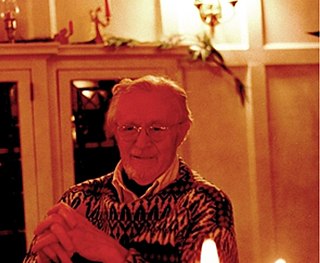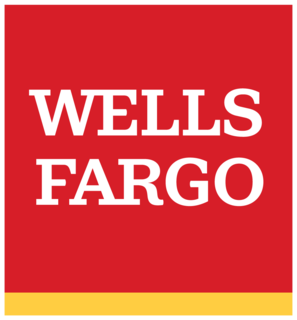Related Research Articles

U.S. Bancorp is an American bank holding company based in Minneapolis, Minnesota, and incorporated in Delaware. It is the parent company of U.S. Bank National Association, and is the fifth largest banking institution in the United States. The company provides banking, investment, mortgage, trust, and payment services products to individuals, businesses, governmental entities, and other financial institutions. It has 3,106 branches and 4,842 automated teller machines, primarily in the Western and Midwestern United States. It is ranked 117th on the Fortune 500, and it is considered a systemically important bank by the Financial Stability Board. The company also owns Elavon, a processor of credit card transactions for merchants, and Elan Financial Services, a credit card issuer that issues credit card products on behalf of small credit unions and banks across the U.S.
Kinney National Service, Inc. was an American conglomerate company from 1966 to 1972. Its successors were National Kinney Corporation and Warner Communications, Time Warner and AOL Time Warner and its current successor is WarnerMedia. Kinney National's predecessors were Kinney Service Corporation and National Cleaning Contractors, Inc., whose merger began in January 1966 and was completed in August of the same year.
CoreStates Financial Corporation, previously known as Philadelphia National Bank (PNB), was a United States bank holding company in the Philadelphia, Pennsylvania, metropolitan area.
The Bank of Hawaii Corporation is a regional commercial bank headquartered in Honolulu, Hawaii. It is Hawaii's second oldest bank and its largest locally owned bank in that the majority of the voting stockholders reside within the state. Bank of Hawaii has the most accounts, customers, branches, and ATMs of any financial institution in the state. The bank consists of four business segments: retail banking, commercial banking, investment services, and treasury. The bank is currently headed by chairman, president and chief executive officer, Peter S. Ho.
SouthTrust Corporation was a banking company headquartered in Birmingham, Alabama. In 2004, SouthTrust reached an agreement to merge with Wachovia in a stock-for-stock deal. At the time of the merger with Wachovia was completed, SouthTrust had $53 Billion in assets. SouthTrust was listed on the NASDAQ exchange under the ticker symbol SOTR. The company was headquartered in the SouthTrust Tower, now known as the Shipt Tower. SouthTrust had branches in Alabama, Florida, Georgia, Mississippi, North Carolina, South Carolina, Tennessee, Texas and Virginia. By the end of 2005, all former SouthTrust branches that remained open carried the Wachovia name.

First Union Corporation was a bank holding company that provided commercial and retail banking services in eleven states in the eastern U.S. First Union also provided various other financial services, including mortgage banking, credit card, investment banking, investment advisory, home equity lending, asset-based lending, leasing, insurance, international and securities brokerage services and private equity, through other subsidiaries. In September 2001, First Union completed a merger with Wachovia National Bank to become Wachovia Corporation, one of the largest financial holding companies in the US. As of the end of 2000, First Union had over $171 billion of total assets, over 70,000 employees and 2,193 branches.
G. Kennedy "Ken" Thompson is an American businessman who was previously chairman, president, and CEO of Wachovia Corporation, formerly First Union Corporation, from 2000 through 2008. First Union Corporation acquired Wachovia Corporation and changed its name to Wachovia in September 2001 after fending off a hostile takeover attempt by SunTrust Bank. Thompson succeeded Edward E. Crutchfield in 2000, who stepped down due to health reasons. Previous positions at First Union included vice chairman of the corporation and head of Global Capital Markets; president, First Union-Florida; senior vice president and head of First Union Human Resources; president, First Union Georgia.

William A. Conway was a Wall Street messenger boy who rose to CEO of Garden State National Bank, but he is best remembered for his efforts working as an activist shareholder of behalf of minority stockholders of Garden State during the late 1970s. As a dissident member of the board, his independent efforts to block a merger he viewed as unfair to certain minority shareholders is often compared to the shareholder rights efforts undertaken in recent years by certain hedge funds.
Charles A. Agemian was an Armenian-American banker who took early retirement from Chase Manhattan Bank, where he was executive vice president of operations, to become chairman and chief executive officer of the Hackensack Trust Co., which later was renamed Garden State National Bank.
Firstar Corporation was a Milwaukee, Wisconsin-based regional bank holding company that existed from 1853 to 2001. In 2001, Firstar acquired U.S. Bancorp and assumed its name, moving its headquarters to Minneapolis.

Zions Bancorporation is a bank holding company headquartered in Salt Lake City, Utah. Zions Bancorporation originated as Keystone Insurance and Investment Co., a Utah Corporation, in April 1955. In April 1960, Keystone, together with several individual investors, acquired a 57.5 percent interest in Zions First National Bank from The Church of Jesus Christ of Latter-day Saints. In 1965, the name of the company was changed to Zions Bancorporation. The first public offering of shares in Zions Bancorporation was made in January 1966. There continued to be some minority shareholders until April 1972, when the company exchanged the remaining minority shares for common shares. In 2018, Zions Bancorporation merged into its bank subsidiary, ZB, N.A., which was then renamed Zions Bancorporation, N.A. Zions Bancorporation now operates as a national bank doing business under eight local brands, rather than as a holding company.
Mercantile Bancorporation was the largest bank holding company in Missouri when it was acquired by Firstar Corporation in 1999.

Wells Fargo & Company is an American multinational financial services company with corporate headquarters in San Francisco, California, operational headquarters in Manhattan, and managerial offices throughout the United States and internationally. The company has operations in 35 countries with over 70 million customers globally. It is considered a systemically important financial institution by the Financial Stability Board.
First Citizens Bank of South Carolina is a subsidiary of First Citizens BancShares, Inc., of Raleigh, North Carolina; it is the largest bank in the United States controlled by a single family. Prior to its acquisition by First Citizens BancShares Inc. of Raleigh, First Citizens Bancorporation, Inc. was a bank holding company based in Columbia, South Carolina with over $8 billion in assets. First Citizens Bank of South Carolina had branches in both South Carolina and Georgia. It was the second-largest commercial bank headquartered in South Carolina.

Wachovia was a diversified financial services company based in Charlotte, North Carolina. Before its acquisition by Wells Fargo and Company in 2008, Wachovia was the fourth-largest bank holding company in the United States, based on total assets. Wachovia provided a broad range of banking, asset management, wealth management, and corporate and investment banking products and services. At its height, it was one of the largest providers of financial services in the United States, operating financial centers in 21 states and Washington, D.C., with locations from Connecticut to Florida and west to California. Wachovia provided global services through more than 40 offices around the world.
Central Carolina Bank and Trust (CCB) was a bank headquartered in Durham, North Carolina. It began in 1961 with the merger of Durham Bank & Trust and University National Bank of Chapel Hill, North Carolina. Central Carolina Bank and Trust merged with SunTrust Banks of Atlanta, Georgia in 2005, which in turn merged with BB&T to form Truist Financial. Its headquarters was the historic 17-story Hill Building in North Carolina.
National Bank of Commerce was a bank headquartered in Memphis, Tennessee until it was taken over by SunTrust Banks in 2005.
American Fletcher National Bank was an Indianapolis-based bank founded in 1839 that was eventually absorbed by Bank One and later Chase Bank. Since the merger of the Fletcher Trust Company with the American National Bank to form the American Fletcher National Bank and Trust Company at the end of 1954, it had been the largest or the second largest bank in the state of Indiana, often changing places with its Indianapolis-based rival Indiana National Bank for the top spot. From the mid-1950s through the late 1980s, American Fletcher National Bank and Trust, along with Indiana National Bank and Merchants National Bank, was one of the top three largest banks within Indianapolis and its holding company, American Fletcher Corporation, was one of the top three largest bank holding companies within the state, along with INB Financial Corporation and Merchants National Corporation.

Fidelity Trust Company was a bank in Philadelphia, Pennsylvania. Founded in 1866 as Fidelity Insurance, Trust, & Safe Deposit Company, the bank was later renamed Fidelity Trust Company, Fidelity-Philadelphia Trust Company, The Fidelity Bank, and Fidelity Bank, National Association. It was absorbed in 1988 in the biggest U.S. bank merger up to that point, and is today part of Wells Fargo.
References
This article needs additional citations for verification .(June 2009) |
